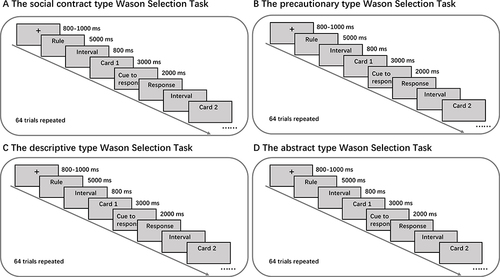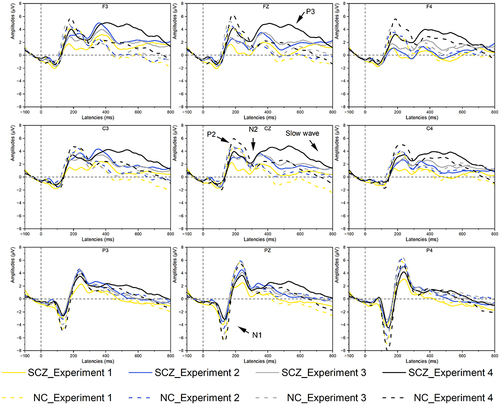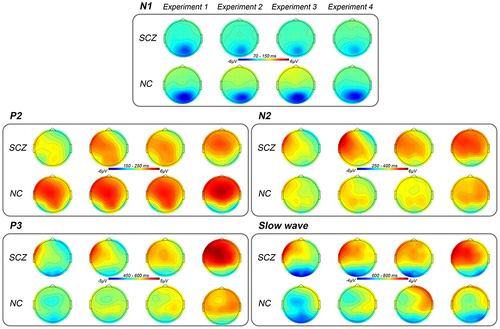Figures & data
Figure 1 Schematic illustration of the Wason selection tasks: (A) social contract; (B) precautionary; (C) descriptive; and (D) abstract.

Table 1 Demographic Characteristics and Clinical Information
Table 2 Mean RTs and Accuracy Rate Were Calculated for Each of the Four Experiments (Mean ±SD)
Table 3 The Average Number of Trials for ERP Analyzing
Figure 2 Grand averaged ERPs of both SCZ and Normal control groups under different experiments (experiment 1, 2, 3, and 4) of the pooling electrodes site (frontal lobe site (F3, Fz, F4), central lobe site (C3, Cz, C4), and parietal lobe site (P3, Pz, P4)). As signed at Cz site, the N1 time window range are from 70 to 150 milliseconds (ms); the N2 time window range is 250–450 ms, the P3 time window range is 450–600 ms, the slow wave time window range is 600–800 ms. SCZ, schizophrenia group; NC, normal control group. Experiment 1, social contract type Wason selection task; Experiment 2, precautionary type Wason selection task; Experiment 3, descriptive type Wason selection task; Experiment 4, abstract type Wason selection task.

Figure 3 Topographical distribution of grand averaged N1, P2, N2, P3, and slow wave within a time window of 70–150 ms (N1), 150–250 ms (P2), 250–450 ms (N2), 450–600 ms (P3), and 600–800 ms (slow wave) post-stimuli under different experiments. SCZ, schizophrenia group; NC, normal control group. Experiment 1, social contract type Wason selection task; Experiment 2, precautionary type Wason selection task; Experiment 3, descriptive type Wason selection task; Experiment 4, abstract type Wason selection task.

